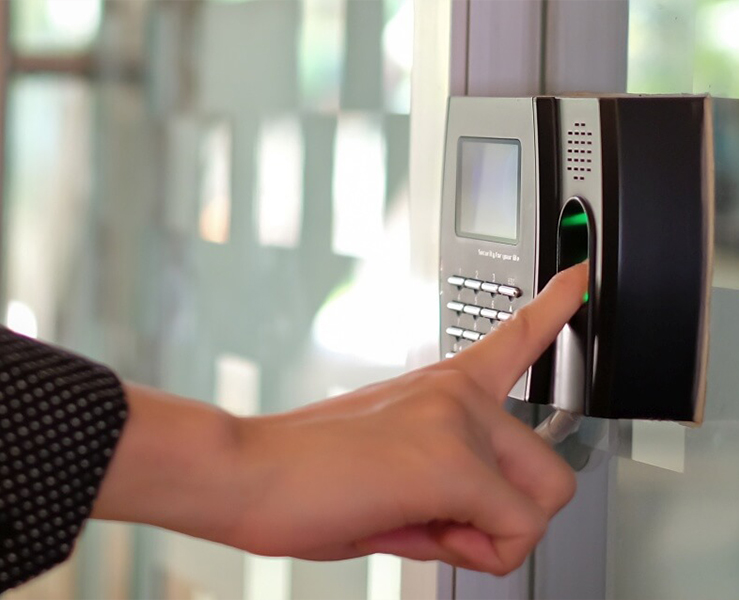Blog

March 31, 2025
Keys can be lost, access cards can be stolen, and passwords can be forgotten, but your fingerprint, face, or voice are uniquely yours. Nowadays, as security threats become more sophisticated, relying on traditional methods isn’t enough. That’s why businesses, government agencies, and high-security facilities are turning to biometric technologies, which offer a smarter, more secure way to manage who gets in and out.
These systems use physical characteristics like fingerprints, facial recognition, and even vein patterns to verify identities with precision. But how do they work? What are the best options for your business? And are biometrics as secure as they seem?
Let’s break it all down.

A biometric access control system is a high-tech way to regulate entry by recognizing individuals based on their physical characteristics or behavioral traits. Instead of relying on PIN codes, keys, or ID cards, these systems scan and authenticate a person’s identity using features like fingerprints, facial recognition, iris patterns, voice, or even the veins in their hands.
Here’s how it works:
Data Capture: A biometric device scans a unique trait (e.g., fingerprint or face).
Storage & Comparison: The system stores this data in a secure format (not as raw images but as encrypted templates).
Verification & Access: When someone tries to enter, the system compares their biometric data with stored profiles. If there’s a match, access is granted.
Since every person’s biometric traits are unique, this system offers a level of security that’s tough to replicate or bypass.

One of the most widely used biometric methods, fingerprint readers analyze the unique ridges and patterns on a person’s fingertips. They’re cost-effective, easy to install, and commonly found in offices, smartphones, and high-security facilities.
Facial recognition maps out key facial features, such as the distance between the eyes or the shape of the jawline. These systems provide contactless access and are widely used in airports, workplaces, and even smartphones.
Iris scanners read the intricate patterns in the colored part of a person’s eye. Since iris patterns are stable throughout life and extremely difficult to fake, this method is preferred in high-security environments like government buildings and research labs.
Voice recognition systems analyze vocal characteristics, such as pitch and tone, to verify identity. These are particularly useful for phone-based authentication and remote access control.
This lesser-known but highly secure method maps the unique vein structure in a person’s hand or finger. Because vein patterns are internal and invisible, they are nearly impossible to forge, making this system ideal for banking and healthcare settings.
Stronger Security. Unlike passwords or ID cards that can be shared or stolen, biometric traits are unique to each individual. This greatly reduces the risk of unauthorized access.
No More Lost Keys or Cards. With biometrics, there’s no need to carry physical keys or access cards. Your fingerprint or face is all you need.
Fast and Convenient. A fingerprint or facial scan takes just seconds, making access quick and hassle-free.
Easy Integration. Many biometric systems can be integrated with existing security systems, such as alarms and surveillance cameras, for added protection.

No. Most biometric systems don’t store raw images of facial features or fingerprints. Instead, they convert this data into encrypted codes that can’t be reverse-engineered.
While no system is 100% foolproof, advanced biometric devices include anti-spoofing measures to detect fake fingerprints, photos, or voice recordings.
Factors like poor lighting (for facial scans) or skin conditions (for fingerprints) can sometimes affect recognition. Choosing a system with multi-modal authentication (e.g., fingerprint reader + PIN) can help.
If you’re considering investing in a biometric access control system, here are some important features to look for:
High Accuracy. Advanced sensors use 3D images and infrared technology to ensure reliable recognition, even in different lighting conditions.
Real-Time Monitoring. Track who enters and exits in real-time, which is great for businesses and security teams.
User-Friendly Interface. A good system should be easy to use for both administrators and end users.
Customization Options. Some systems allow multi-factor authentication (biometrics + PIN) for extra security.

Locks can be picked, passwords hacked, and keycards stolen, but your fingerprint, face, or voice? Those are uniquely yours. Biometric security doesn’t just grant access; it verifies identity with certainty.
At HSI Security, we tailor biometric systems to fit your needs, whether for an office, hospital, or high-security facility. From fingerprint readers and facial recognition to iris scanning, our technology ensures only the right people get in.
Smarter security starts here. Contact HSI Security today and take control like never before.
JULY 03, 2024
JULY 03, 2024
JULY 03, 2024